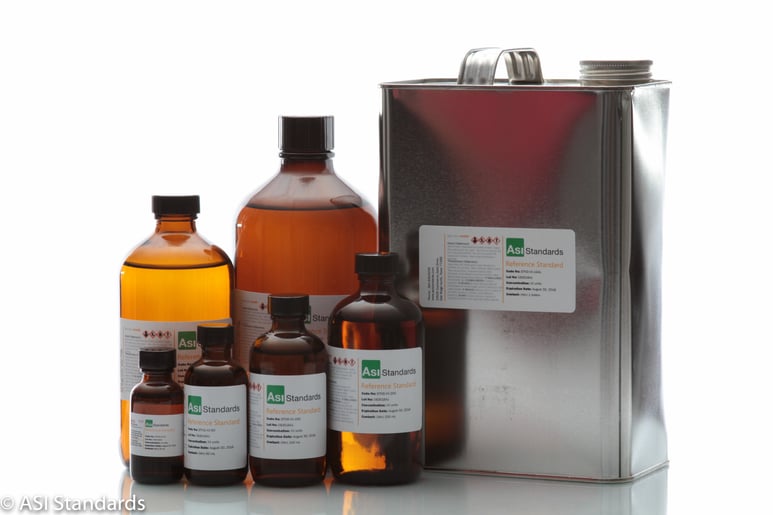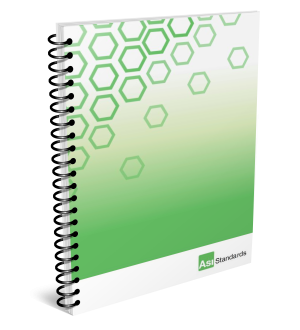Throughout life we complete many tedious but necessary tasks. Brush our teeth, eat our broccoli, limit our coffee intake to about 4 cups a day (you too?). But rarely do we ask what are we doing these things for, really?
Maybe you feel this way about calibrating your instrument or maybe you are new to the calibration process. Either way, whether you only calibrate your instrument once a year or every day, it is crucial that you do so.
But why? And what does it even mean to calibrate?
Let's dive in with the basics.
6 Things You Have to Know About Calibration Standards
1. What does it mean to calibrate an instrument?
To calibrate an instrument means to compare a standard (a known and certain measurement) and the measurement of your instrument. When you calibrate your instrument, you are basically making small adjustments to your instrument by comparing your instrument to a standard that is uniquely and accurately made to meet your needs.
2. What is calibration uncertainty?
Uncertainty is the amount of doubt that the instrument's measurement is accurate. Uncertainty can result from the standard for comparison, lab conditions, environmental conditions, and more. However, merely because you have a certain amount of uncertainty does not mean you have an "error". Some uncertainty is acceptable and expected.
3. What is calibration traceability?
Traceability is the "property of a measurement result whereby the result can be related to a reference through a documented unbroken chain of calibrations, each contributing to the measurement uncertainty" (NIST). Basically, traceability refers to the procedures and documentation that show the chain of comparisons (calibrations) that the lab has made in order to show that the instrument calibrations have been accurate.
"The following requirements must be fulfilled in order to provide valid statements of traceability:
– A very well-defined quantity that has been measured.
– A complete description of the measurement system used to perform the measurement.
– A stated measurement result accompanied by a documented uncertainty.
– A complete specification of the stated reference at the time the measurement system was compared to it.
– An internal measurement assurance program* for establishing the status of the measurement system at the time relevant to the claim of traceability.
– An internal measurement assurance program* for establishing the status of the stated reference at the time that the measurement was performed." (Calibrate)
*This requirement is often satisfied by statistical quality control charting as defined in ASTM D6299.

4. Why calibrate an instrument?
Calibrating your instrument ensures that the results of your instrument are accurate and reliable. Over time, equipment will slowly degrade resulting in an inaccurate measurement with possibly dangerous consequences for you and the consumer. The equipment now has lost its stability and is no longer up to par with the manufacturer's specifications.
Therefore, calibrating your instrument is a type of maintenance to ensure that you are getting the most out of your equipment investment.
5. How often should you calibrate an instrument?
Your manufacturer will often do an initial calibration on the instrument. However, once you start using the instrument, it will start to degrade.
The time between calibrations is highly dependent on the instrument and how the instrument is used. In general, most XRF instruments can go an entire year without additional calibrations while ICP instruments may need daily calibration.
6. What standard should you use?
The composition and quality of your calibration standards matter.
The variable(s) being measured need to be represented in your calibration standards for you to be measuring like with like to create trustworthy results. While instrument manufacturers are getting better at providing "out-of-the-box" calibrations, specific applications will often require a more customized solution from your favorite standards provider that can fine-tune both the variables in question and the matrix they will be measured in.
If the confidence you have in your instrument results is based on your detailed calibration of that instrument with a standard, it makes sense that if the standard is not of high quality, then it can't be relied on, and neither can your instrument. A high-quality standard made by a company you trust is essential when it comes to calibrating your instrument.
Without a high-quality standard to compare your instrument to, your company is basically crossing its fingers and hoping for good luck. Don't rely on luck; rely on a high-quality standard you can trust.
Cheers to your quality future!


